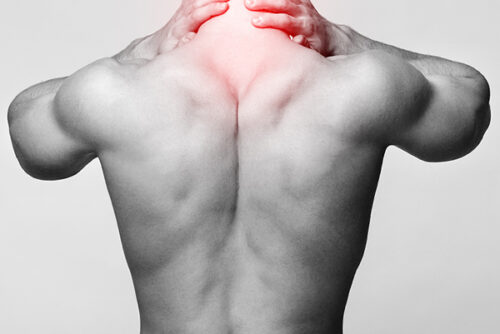
What is the treatment for joint pain due to arthritis?
Initial treatment may include physical therapy, exercises that off-load the painful joints, glucosamine supplements and oral painkillers.
What is viscosupplementation?
Viscosupplementation involves injecting a gel-like substance called hyaluronic acid into the joint to lubricate and cushion the joint. Such treatment may help reduce joint pain for about 6-12 months.
Can radiofrequency ablation help reduce joint pain?
Yes. Radiofrequency (RF) ablation uses RF energy to generate heat. This heat is targeted at nerves that supply the joint. By removing painful signals within the nerves, pain from the joint is reduced.
RF ablation has been shown to be effective in reducing shoulder, hip and knee pain, improving mobility and range of motion. The effect can last up to 2-3 years. This also avoids the surgical risk of undergoing a joint replacement surgery, especially in elderly patients who may have multiple medical problems.
Rotator Cuff Syndrome
What is rotator cuff syndrome?
It is a condition to describe degeneration or injury of the muscles and tendons surrounding the shoulder joint (rotator cuff).
What are the symptoms of rotator cuff syndrome?
It usually presents with a deep dull ache in the shoulder, making it difficult to lie on the same side and therefore affecting sleep. There may be restrictions to movement affecting your ability to raise your arm to comb your hair, to remove your shirt or to reach behind your back.
How is rotator cuff syndrome treated
Physiotherapy to restore flexibility and strength is usually the first treatment.
Steroid injections can also give temporary relief especially if the pain is interfering with your sleep and daily activities.
Surgery may be needed if MRI shows significant tendon or muscle tears.
Shoulder Arthritis
What is shoulder arthritis?
Shoulder arthritis occurs when there is damage to the cartilage inside the shoulder joint. The arthritis can result from wear and tear or from trauma.
What are the symptoms of shoulder arthritis?
Pain is the main symptom and is usually worse with activities such as exercising, lifting or carrying heavy objects. There may also be stiffness and loss of range of motion of the shoulder. Clicking or grinding sounds are not uncommon too.
How is shoulder arthritis treated?
Range of motion exercises are important to keep the joint mobile. Lifestyle modifications are necessary to reduce the triggers that cause pain.
Non-surgical treatment includes ultrasound-guided steroid injection into the shoulder joint, as well as radiofrequency ablation to remove the painful nerves around the joint.
Severe shoulder arthritis not responding to conservative treatment will require surgery.
Hip Arthritis
What is hip arthritis?
Hip arthritis is degeneration of the cartilage within the hip joint. It occurs with ageing or after injury to the hip. Less common causes are avascular necrosis of the hip and rheumatoid arthritis causing early destruction of the hip joint.
What are the symptoms of hip arthritis?
Pain in the hip, groin or buttock which is worse with movement. Stiffness with reduced range of motion, grinding or clicking noises are also common.
How is hip arthritis treated?
Non-surgical treatments include physiotherapy, activity and lifestyle modifications, hip strengthening exercises, and taking pain medication when necessary.
Steroid injection or hyaluronic acid injection into the hip joint can be administered for short to medium term pain relief.
Radiofrequency ablation of the articular nerves of the hip joint can also effectively relieve pain for a few years without the need for hip replacement surgery.
Knee Osteoarthritis
What is knee osteoarthritis?
Osteoarthritis (OA) is a degenerative condition of the knee where the cartilage is gradually worn out. Besides ageing, previous injury, infection, and obesity are other factors that can lead to OA.
What are the symptoms of knee OA?
Pain or swelling that is worse with activity.
Stiffness, especially after sitting for a while or in the morning upon waking up.
Reduced range of motion and grinding sounds in the knee.
How is knee OA treated?
Initial treatment includes weight loss, strengthening and stretching exercises and knee brace to unload or support the knee joint.
Injection of steroid into the inflamed knee joint, or injection of hyaluronic acid to increase lubrication in the knee can give short-term relief.
Some patients will also benefit from radiofrequency ablation of the genicular nerves of the knee to reduce pain. Advanced OA with significant joint deformity or restricted movement will require joint replacement surgery.



![pain-conditions-back[1] pain-conditions-back[1]](https://thepainclinic.com.sg/wp-content/uploads/2022/11/pain-conditions-back1-500x334.jpg)
![pain-conditions-shingles[1] pain-conditions-shingles[1]](https://thepainclinic.com.sg/wp-content/uploads/2022/11/pain-conditions-shingles1-500x334.jpg)
![pain-conditions-trigeminal[1] pain-conditions-trigeminal[1]](https://thepainclinic.com.sg/wp-content/uploads/2022/11/pain-conditions-trigeminal1-500x334.jpg)
![pain-conditions-head[1] pain-conditions-head[1]](https://thepainclinic.com.sg/wp-content/uploads/2022/11/pain-conditions-head1-500x334.jpg)
![pain-conditions-neuro[1] pain-conditions-neuro[1]](https://thepainclinic.com.sg/wp-content/uploads/2022/11/pain-conditions-neuro1-500x334.jpg)
![pain-conditions-myofascial[1] pain-conditions-myofascial[1]](https://thepainclinic.com.sg/wp-content/uploads/2022/11/pain-conditions-myofascial1-500x334.jpg)
![pain-conditions-fibromyalgia[1] pain-conditions-fibromyalgia[1]](https://thepainclinic.com.sg/wp-content/uploads/2022/11/pain-conditions-fibromyalgia1-500x334.jpg)
![pain-conditions-cancer[1] pain-conditions-cancer[1]](https://thepainclinic.com.sg/wp-content/uploads/2022/11/pain-conditions-cancer1-500x334.jpg)
